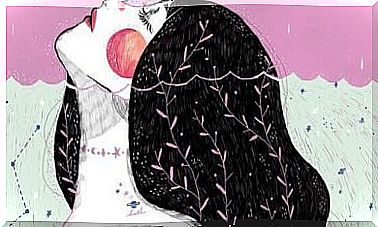Nidotherapy: Healing In Another Environment

The term “nidotherapy” refers to a modern therapeutic method that aims to help patients heal in a different environment. Its main goal is to change the environment for those suffering from schizophrenia and other serious mental disorders.
Experts in the field apply this therapy in combination with other types of interventions. Instead of just focusing on direct interventions with patients, the goal is to help them identify the need for change. This would, as a consequence, motivate them to fight for a change in their environment.
The purpose of nidotherapy is not to change the individual, but instead to make the relationship between him and his environment more comfortable. It turns out that this can provide an overall improvement in the person’s life. However, this is not the direct result of the treatment. Instead, it comes from giving rise to a more harmonious relationship between the person and what surrounds him. It thus helps the person to heal in a different environment than he is used to.
In fact, a person’s environment is of significant importance in the occurrence of diseases and relapses. For this reason, nidotherapists work with patients suffering from schizophrenia to be able to identify these factors and try to reduce the number and severity of relapses.
Healing in a different environment: The theoretical basis for nidotherapy
Psychiatrist Peter Tyrer is the founder of this therapy. During his 40 years in the profession, he has published 38 books, been the editor of the medical journal The British Journal of Psychiatry and developed nidotherapy as a form of environmental intervention. Its theoretical basis is closely linked to the Darwinian concept of development.
An organism’s adaptation to its environment guarantees its prosperity. So if we instead get the environment to adapt to the organism in a similar way, it will be possible to achieve positive behavioral changes.
In addition, experts in mental health have always taken into account environmental conditions when evaluating and treating people with mental disorders. Yet researchers almost never follow a consistent intervention strategy.
Giving the environment primary importance enables changes that otherwise could not be achieved. Environmental problems are often the main cause of relapse into mental illness.
To achieve success with environmental interventions, it is necessary to balance the patient’s needs and those of others.

Principles of Nidotherapy
The main principles of nidotherapy are:
- Safe location. This is intended to take the environment into account from the patient’s point of view.
- Design of realistic goals regarding the environment.
- Design of specific goals related to environmental change.
- Improving social functions. In other words, focus on features rather than symptoms.
- Adaptation and personal control. In principle, the patient is allowed to participate in an appropriate way and take responsibility for the program.
- Wider integration of the environment and mediation.
- Involvement of others – including independent mediators – in the process of resolving difficult aspects of environmental change.
Synchronization with other therapies and modifiers
Nidotherapy can work in parallel with the application of other existing therapies. But at the same time it must be independent of them.
Helping the patient to focus on environmental changes can improve adaptation to their environment.
The goals suggested during nidotherapy often involve many team members, such as social workers, psychologists, occupational therapists, and creativity therapists.
Healing in another environment through nidotherapy: Duration and phases
Formal interventions usually yield lasting results according to the author’s experience. This therapeutic model consists of five phases.
Phase I. Identify the limitations of nidotherapy
Nidotherapy is usually implemented after the patient has been extensively treated and has obtained the greatest possible results from the available interventions. Other times, it is performed after a long struggle between therapists who want to perform interventions and patients who give them up.
If the therapist makes the patient distinguish between phenomena that come from the disorder and those that come from the environment, the risk of conflict is reduced, and the possibility of collaboration with other types of interventions is improved.
Phase II. Complete environmental analysis
All the patient’s wishes must be taken into account, no matter how impossible they may seem.
First, the patient does his own environmental analysis. Then it’s the therapist’s turn. It can be done with or without the patient. We must note that the two environmental analyzes are likely to differ from each other. When they are ready, the therapist and the patient must reach an agreement on the goals. If there are any differences, they must contact the mediator.
Phase III. Implementation of a common path
This phase usually takes many hours to complete. But if it is done successfully, subsequent phases can be negotiated quickly. The different parts of this common path must be identified and planned in each intervention.
Many of these changes need to be thought through carefully. And not only that, it is also important that they happen gradually. It is important to set appropriate time frames for these changes to avoid future disappointment.
Phase IV. Monitoring progress
It can take some time to reach set goals. Nevertheless, the patient must keep them in mind at all times, and the procedures for achieving them must be transparent.
It is important to provide feedback on the progress made. Many therapists recommend giving feedback every three months. At the same time, it is very unlikely that all goals will be achieved successfully.
Phase V. Adaptation of nidotherapy to be able to heal in another environment
Sometimes the goals turn out to be completely impossible to achieve. When this happens, it is necessary to go back and draw a new path with different goals – they may be less ambitious or even more, depending on the case.
In this task, the patient’s role is very important, as is an honest acceptance of the decision.

Conclusions
More research is needed on this topic in order to fully understand its effectiveness, benefits and potential risks. At the same time, people with mental health problems, health care professionals, managers and decision makers should see this new therapy from an experimental point of view.
Overall, nidotherapy is a complex process that is still under development. To date, it is the only systematic and time-controlled environmental intervention for persistent mental disorders. Therapists must be trained to accept patients for what they are and not for what they want them to be.









